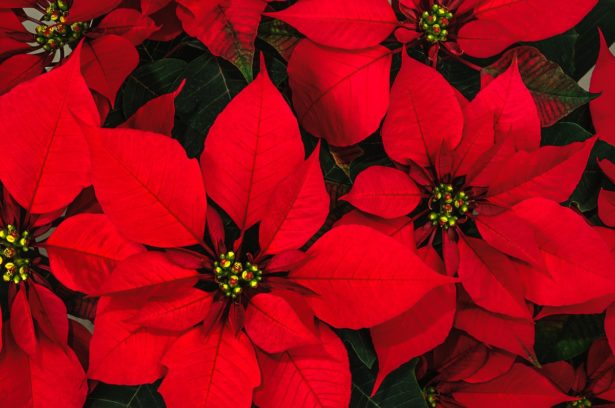
Christmas is just around the corner and you know you’ll end up with at least one Christmas flower in your house; but do you know how to keep poinsettias alive? It’s trickier than you might think… Read on to get some tips on how to make those red beauties last past the holidays and see the new year with you.
Poinsettias Plant
The scientific name of poinsettias is Euphorbiaceae pulcherrima, which translates to “the most beautiful euphoria”, and they’re a plant native to Mexico and Central America. It was first introduced to the USA by the former American ambassador to Mexico Dr. Joel R. Poinsett, who later the plant was named after.
Known as one of the most popular seasonal plants, poinsettias are usually seen in pots, though in nature, they can reach a height of up to sixteen feet. Due to their sub-tropical origins, this type of plant needs moderate temperatures, somewhere in between 10—21C, as any environment warmer or colder than that will only shorten the plant’s lifespan. As a result, poinsettias are grown inside in warmer climates, needing plenty of sunlight during the day and long enough periods of darkness during early spring in order to grow flowers.
Poinsettias Flowers
The dark, intense red parts of the plant that we recognize as flowers are actually colored bracts, or modified leaves. The actual flower, which is so small it’s usually overseen, grows in the center of each leaf bunch and it’s either green or yellow.
Poinsettias bloom in different colors, including cream, peach, pink and white.
How to Care for Poinsettias
Here are a few useful tips to lengthen the life of your Christmas flower:
- Keep the plant near a window where it will be able to enjoy plenty of sunlight during the day, for at least five hours a day. If you live somewhere very cold, make sure the leaves don’t touch the window.
- By the time February comes around, cut down the flowering branches down to 15 centimeters in height, leaving only up to 3 leaves on the old stems. This will cause the buds to grow and develop into new bracts. Add fertilizer every 2 weeks.
- Around June, transfer the poinsettia into a bitter pot if needed and then sink it up to the rim into the garden on a shaded and well-drained spot, and remember to water it frequently. In August, cut down all lateral shoots down to 10 centimeters, and by the end of the month bring it back inside the house.
- Because they need plenty of shade during their blooming stage, they need to undergo a dark treatment at home to prevent the flowers from not growing. On the first of October, place your poinsettia inside a dark closet between 5PM and 8AM on a daily basis, for a total of 40 days. Any exposure to artificial light during this period would result in the inhibition of flowering. After the 40 days are gone, they can be placed by a window and treated normally once again.
Are Poinsettias Poisonous to Cats and Dogs?
Even though poisettias are commonly regarded as poisonous plants, you’d be happy to know that they aren’t. However, it’s still best to keep them slightly away from your pets.
Generally, these plants ooze a milky sap that leads people with latex allergies to have a mild skin reaction when they come in contact with it. In the case of pets, if ingested, animals might get an upset stomach, with symptoms such as vomiting, nausea and excessive drooling. Rarely, it can also cause diarrhea.
How Often to Water Poinsettias
This type of plant requires plenty of water. Don’t let the soil in the pot dry out. Check the status of the soil by touching it. If it’s dry, water it until you see the excess being drained by the pot. Drainage is important, as the soil needs air and stagnant water could keep it from getting enough of it. If the environment the plant is in is dry and gets plenty of light, more watering will be needed.
Where to Buy Poinsettias
You can easily order your Christmas flower online, without having to leave your house. Amazon has got your back. You can either get a bouquet of fresh red poinsettias or you can just get a stress- and care-free pot of the artificial equivalent. The choice is yours.
You may also be interested in our guides to two of the best plants for hedges: the loropetalum and the pittosporum.